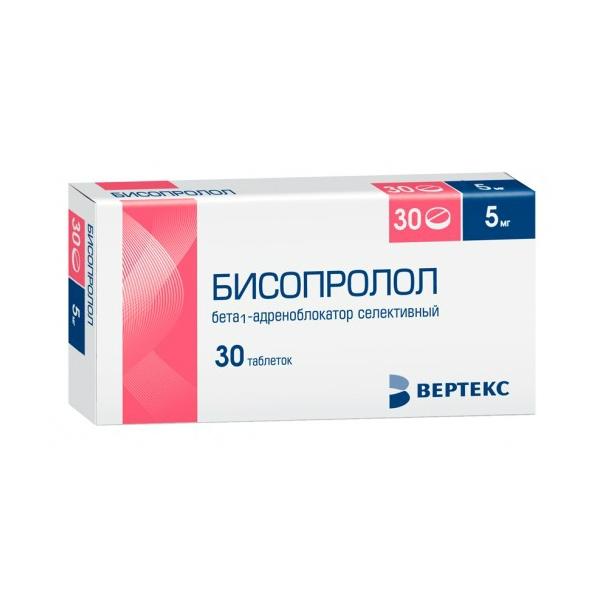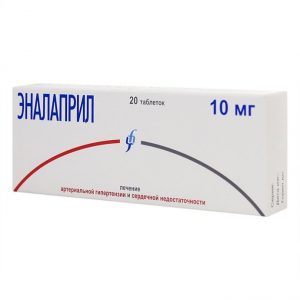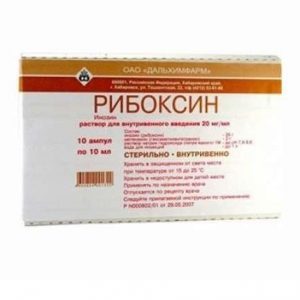Description
Release form
film-coated tablets.
Packing
30 pcs.
Pharmacological action
Bisoprolol – selective beta1-blocker without internal sympathomimetic activity, does not have membrane stabilizing activity.
Bisoprolol reduces plasma renin activity, reduces myocardial oxygen demand, reduces heart rate (at rest and during exercise) and cardiac output, while stroke volume does not significantly decrease.
Inhibits AV conduction. It has antianginal and hypotensive effects. In high doses (200 mg or more), it can cause blockade and 2-adrenoreceptors mainly in the bronchi and in the smooth muscles of blood vessels.
Contraindications
Chronic heart failure II B – stage III, cardiogenic shock, AV block II and III degree, CVD, sinoatrial block, bradycardia, arterial hypotension (systolic pressure less than 90 mm Hg) tendency to bronchospasm ( and other diseases with bronchial obstructive syndrome), severe peripheral circulatory disorders, concomitant use of MAO inhibitors (with the exception of MAO inhibitors of type B), increased sensitivity to bisoprolol and other beta-adrenoblock Ram pregnancy and lactation.
Special instructions
Use with caution in case of psoriasis and for indications of psoriasis in the family history, diabetes mellitus in the decompensation phase, with a predisposition to allergic reactions.
With pheochromocytoma, the use of bisoprolol is possible only after taking alpha-blockers. To prevent the sudden withdrawal of bisoprolol, the course of treatment should be completed slowly with a gradual decrease in dose.
Composition
1 tablet contains bisoprolol (in the form of a fumarate) 5 mg.
Dosage and administration
Individual. For oral administration, the daily dose of bisoprolol is 2.5-10 mg, the frequency of administration is 1 time / day. The maximum daily dose is 10 mg.
Side effects of
From the side of the central nervous system and peripheral nervous system: weakness, fatigue, dizziness, headache, sleep disorders, mental disorders (depression, rarely hallucinations), a feeling of cold and paresthesia in the limbs.
From the cardiovascular system: orthostatic hypotension, bradycardia, impaired AV conduction, the appearance of symptoms of heart failure, worsening intermittent claudication and the main clinical symptoms in Raynaud’s syndrome.
From the side of the organ of vision: decreased secretion of lacrimal fluid, conjunctivitis.
From the digestive system: diarrhea, constipation, nausea, abdominal pain.
From the musculoskeletal system: muscle weakness, muscle cramps.
Drug interactions
Allergens used for immunotherapy or allergen extracts for skin tests increase the risk of severe systemic or allergic reactions.
Iodine-containing radiopaque drugs for iv administration increase the risk of anaphylactic reactions.
Phenytoin with iv administration, drugs for inhalation general anesthesia (hydrocarbon derivatives) increase the severity of cardiodepressive action and the likelihood of a decrease in blood pressure.
Changes the effectiveness of insulin and oral hypoglycemic drugs, masks the symptoms of developing hypoglycemia (tachycardia, increased blood pressure).
Antihypertensive effect weaken NSAIDs (delay Na + and blockade of Pg synthesis by the kidneys), GCS and estrogens (delay Na +).
Cardiac glycosides, methyldopa, reserpine and guanfacine, BMKK (verapamil, diltiazem), amiodarone and other antiarrhythmic drugs increase the risk of developing or worsening bradycardia, AV block, heart failure and heart failure. Nifedipine can lead to a significant decrease in blood pressure.
Diuretics, clonidine, sympatholytics, hydralazine and other antihypertensive drugs can lead to an excessive decrease in blood pressure.
Extends the effect of non-depolarizing muscle relaxants and the anticoagulant effect of coumarins.
Tri- and tetracyclic antidepressants, antipsychotic drugs (antipsychotics), ethanol, sedative and hypnotic drugs increase central nervous system depression.
The simultaneous use with MAO inhibitors is not recommended due to a significant increase in the antihypertensive effect, the break in treatment between taking MAO inhibitors and bisoprolol should be at least 14 days.
Non-hydrogenated ergot alkaloids increase the risk of peripheral circulation disorders.
Ergotamine increases the risk of peripheral circulatory disorders Rifampicin shortens T1 / 2.
Overdose of
Symptoms:
arrhythmia, ventricular extrasystole, severe bradycardia, AV block, decreased blood pressure, heart failure, cyanosis of fingernails or palms of the nails, shortness of breath, bronchospasm, dizziness, fainting, convulsions.
Treatment:
gastric lavage and prescription of adsorbing drugs symptomatic therapy:
with developed AV block – iv administration of 1-2 mg atropine, epinephrine or temporary pacemaker
with ventricular extrasystole – lidocaine (Ia class drugs are not used) with srdlp HELL – the patient should be in the Trendelenburg position
if there are no signs of pulmonary edema, – iv plasma-replacing solutions, with inefficiency – the introduction of epinephrine, dopamine, dobutamine (to maintain chronotropic and inotropic the action and elimination of a marked decrease in blood pressure)
in heart failure – cardiac glycosides, diuretics, glucagon
for convulsions – iv diazepam
for bronchospasm – beta2-adrenostimulators inhaled.
Storage conditions
Keep in a dry, dark place, out of reach of children, at a temperature not exceeding 20 ° C.
Deystvuyuschee substances
bisoprolol
pharmacy terms and conditions
prescription
Form of Treatment
tablets
Appointment
Adult prescription
Indications
hypertension, arrhythmia, heart failure
Possible product names
bisoprolol tablets coated film 5 mg 30 pcs.
Vertex, Russia



